Best Kotlin Nullable Types Resources to Buy in November 2025
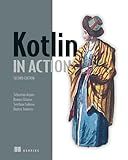
Kotlin in Action, Second Edition



Kotlin In-Depth: A Guide to a Multipurpose Programming Language for Server-Side, Front-End, Android, and Multiplatform Mobile (English Edition)



Head First Kotlin: A Brain-Friendly Guide


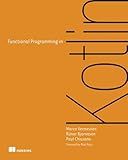
Functional Programming in Kotlin


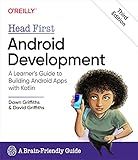
Head First Android Development: A Learner's Guide to Building Android Apps with Kotlin


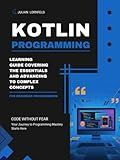
Kotlin Programming: Learning Guide Covering the Essentials and Advancing to Complex Concepts


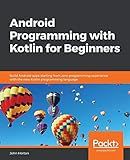
Android Programming with Kotlin for Beginners: Build Android apps starting from zero programming experience with the new Kotlin programming language


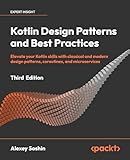
Kotlin Design Patterns and Best Practices: Elevate your Kotlin skills with classical and modern design patterns, coroutines, and microservices


Nullable types in Kotlin allow variables to hold either a non-null value or a null value. Working with nullable types is useful when you want to represent the absence of a value or when the value may not be available at a certain point in your program.
To declare a nullable type in Kotlin, you use the syntax Type?, where Type represents the type of the variable. For example, String? represents a nullable string variable.
When working with nullable types, you need to handle the possibility of null values. There are a few ways to work with nullable types in Kotlin:
- Safe Call Operator (?.): The safe call operator allows you to safely access properties or call methods on nullable types. It returns null if the object is null, or the regular method/property result if it is not. For example: variable?.length returns the length of the string if variable is not null, or null otherwise.
- Elvis Operator (?:): The Elvis operator is used to provide a default value when a nullable expression is null. It has the syntax nullableExpression ?: defaultValue. If the nullable expression is not null, it returns the expression, otherwise it returns the defaultValue. For example: val length = variable?.length ?: -1 assigns the length of variable if it is not null, or -1 if it is null.
- Safe Cast Operator (as?): The safe cast operator is used to safely cast an object to a nullable type. If the cast is not possible, it returns null instead of throwing a ClassCastException. For example: val stringLength = anyObject as? String casts anyObject to String if possible, or assigns null if the cast fails.
- Not-null assertion (!!): The not-null assertion operator can be used to assert that a nullable type is not null. It converts the nullable type to a non-null type, but it throws a NullPointerException if the value is null. This operator should be used with care, as using it on a null value will result in a runtime exception.
By using these operators and techniques, you can effectively work with nullable types in Kotlin and handle null values in a safe and convenient way.
How to safely access properties or functions of nullable objects in Kotlin?
To safely access properties or functions of nullable objects in Kotlin, you can use the Safe Call Operator (?.) and the Elvis Operator (?:).
- Safe Call Operator (?.): It allows you to access properties or call functions of a nullable object without throwing a NullPointerException. If the object is null, the expression following the ?. will be skipped, and the result will be null. Example: val length: Int? = text?.length In this example, length will be null if text is null, otherwise, it will have the length of text.
- Elvis Operator (?:): It provides a default value when the expression preceding it is null. If the expression preceding the ?: is not null, its value will be returned; otherwise, the value after ?: will be returned as a default value. Example: val length: Int = text?.length ?: 0 In this example, length will be the length of text if it is not null; otherwise, it will be 0.
These operators can be chained together to access properties or functions at multiple levels of nested nullable objects.
Additionally, if you are sure that the object you are accessing will not be null at that point, you can use the not-null assertion operator (!!) to access the property or call the function. However, if the object is null, a NullPointerException will be thrown.
Example:
val length: Int = text!!.length
It is generally recommended to avoid using the not-null assertion operator unless you are confident that the object will never be null.
What are the best practices for working with nullable types in Kotlin?
When working with nullable types in Kotlin, it is important to follow some best practices to ensure code correctness and reduce the occurrence of null pointer exceptions. Here are the best practices for working with nullable types in Kotlin:
- Use the "?" operator to define nullable types explicitly: In Kotlin, the "?" operator is used to mark a type as nullable. This makes it explicit that a variable can hold a null value.
- Use the "?.", "?:", and "!!" operators for safe access and handling of nullable types: The safe access operator "?.": Use it to safely access properties or call methods on nullable objects. It returns null if the object is null instead of throwing a null pointer exception. The Elvis operator "?:": Use it for providing a default value in case of nullability. It returns the expression on the left if it is not null; otherwise, it returns the expression on the right. The not-null assertion operator "!!": Use it sparingly when you are absolutely sure that an expression is not null. It throws a null pointer exception if the expression is null.
- Prefer safe calls and null checks: Instead of declaring variables as nullable, try to use optional types or nullable wrapper types like Optional or a custom wrapper if possible. This reduces the need for null checks and helps avoid null pointer exceptions.
- Use the "let" function for null-safe execution: Kotlin provides the "let" function, which allows you to execute a block of code only if the object is not null. This can be useful for performing non-null operations on nullable objects.
- Avoid unnecessary nullability: Declare your variables as non-null whenever possible by initializing them properly or using default non-null values. This reduces the need for null checks and error handling related to nullability.
- Use the ".let" and ".run" scope functions for nullable transformations: When working with nullable types, use the ".let" and ".run" scope functions to transform the nullable objects into non-null results within a code block. These functions handle the nullability internally and allow for cleaner and more readable code.
- Leverage Kotlin's smart cast feature: Kotlin's type inference system performs smart casts on nullable types based on nullability checks. If you check that a variable is not null, the type system automatically casts it to a non-nullable type within the corresponding branch or block.
- Use proper annotations and libraries: Some Kotlin libraries and annotation processors can help identify potential nullability issues and enforce best practices. An example is the "nullability" annotation in JetBrains' "annotations" library, which allows you to annotate types and parameters to indicate their nullability expectations.
By following these best practices, you can write safer and more robust code when dealing with nullable types in Kotlin.
How to use the filterNotNull function with nullable types in Kotlin?
In Kotlin, you can use the filterNotNull function to filter out null values from a collection of nullable types. The filterNotNull function returns a new list that contains all the non-null elements from the original collection.
Here's an example of how to use filterNotNull:
val nullableList: List<String?> = listOf("Hello", null, "World", null, "!") val nonNullList: List = nullableList.filterNotNull()
println(nonNullList) // Output: [Hello, World, !]
In the above example, nullableList is a list of nullable strings, including some null values. By calling the filterNotNull function, we get a new list nonNullList that only contains the non-null strings from nullableList. The null values are filtered out.
Note that the resulting list (nonNullList) will have a non-nullable type (List<String> in this case) because the null values have been filtered out.
